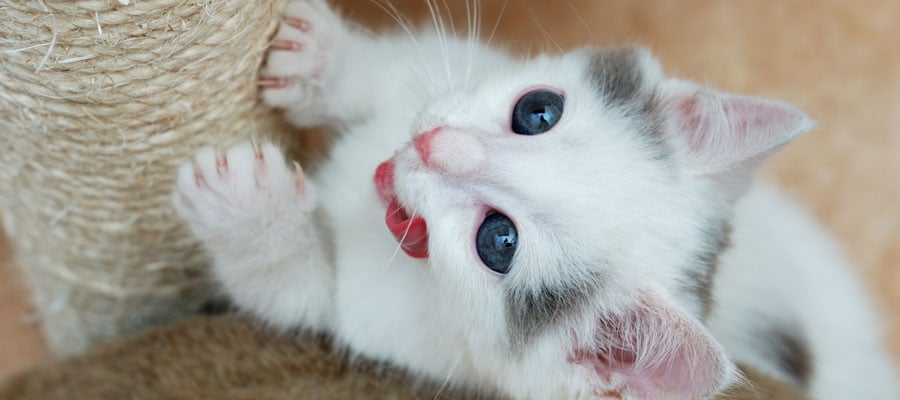“I love when my cat uses the furniture as a scratching post,” said no cat parent ever. This is why, for the past few decades, feline parents have opted to declaw their cat as a way to save their home and keep their fur-baby indoors with them. However, recent research has been released that has since reversed our previous policy on declawing cats.
Below we go over what this recent research has uncovered and what removing a cat’s claws means for the quality of life for the cat.
Declawing Your Cat and the Updated Research
The claws of a cat serve more than just as a defense mechanism. Claws are what provide a frisky feline the ability to stretch, climb trees, mark territory, and remove foreign objects from the claws, to name a few. Take away their claws, none of this is possible for a family feline.
First, declawing a cat is not just simply removing claws but is a full amputation of the last joint in each cat’s toes. If this bone is not removed, and only the claw is removed, then the claw is likely to grow back. Previously it was widely accepted that the removal of this bone was fairly harmless to cats as long as they were kept inside and away from wild predators.
To fully appreciate why declawing is so harmful to cats, you first need to understand how a cat is built and how it works. A cat’s body is engineered so their weight is evenly distributed between all 10 of their toes. This is what makes cats unique from dogs. They walk on their toes and not just the pads on their feet.
Since a feline is designed to walk on their toes, the removal of that last bone in the toe can cause issues.
Declawing Effects and Side Effects
Researchers observed cats that have been declawed and were already litter box trained that they were then less likely to continue to use a litter box in the long term. Immediately following surgery, declawed cats displayed signs of being in pain when using a litter box because their paws had not quite healed. Declawed cats are also more likely to bite as a means of defense since their primary defense is gone.
Declawed cats are more likely to develop back pain, infections, tissue necrosis (tissue dying), painful walking, and lameness. Researchers estimated that 50% of all cats who undergo onychectomy (declawing) suffered from one or more of these complications from the procedure.
Kitty Jekyll to Cat Hyde
Cats are shocked when they realize their claws are gone. So much so that their personalities are likely to change. Some may become fearful and reclusive. Others may become more aggressive and start biting. Indeed, two unpleasant traits of a family cat.
 Cat Scratch Fever
Cat Scratch Fever
Cats like to scratch. Cats need to scratch. Below are a few solutions to help keep your furniture intact, and your kitty happy.
- Provide a stable scratching post, scent it with catnip to draw your feline to the post.
- Keep their nails trimmed.
- Soft plastic caps that go onto the end of a cat’s claw-like Soft Paws are a great alternative.
- Sticky Paws has a tape you can adhere to your furniture to deter cats from scratching it.
- Provide plenty of toys and other outlets so their “instinct to hunt” can be satisfied.
- Synthetic pheromone sprays applied to objects you do not want your feline to scratch are also something you can use in conjunction with the other alternatives.
With this new research and so many options for feline families and furniture to live in harmony other than declawing, Intermountain Pet Hospital made the decision to stop declawing cats unless there is an absolute medical need.
As always, if you have any questions or concerns with your kitty or kitties scratching issues, we invite you to please contact any one of our veterinarians. We would be happy to answer any of your questions.
